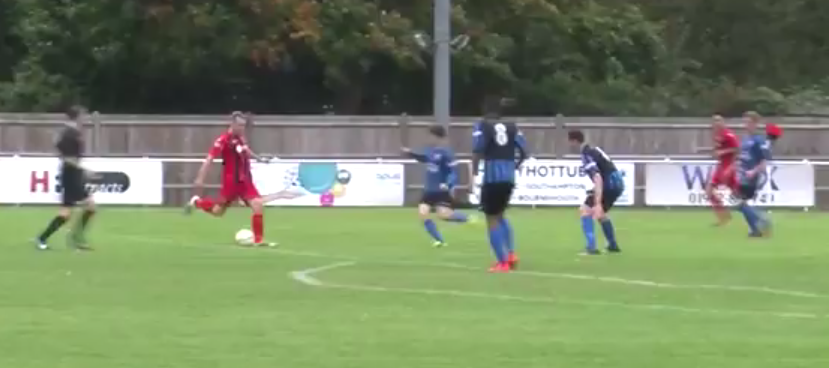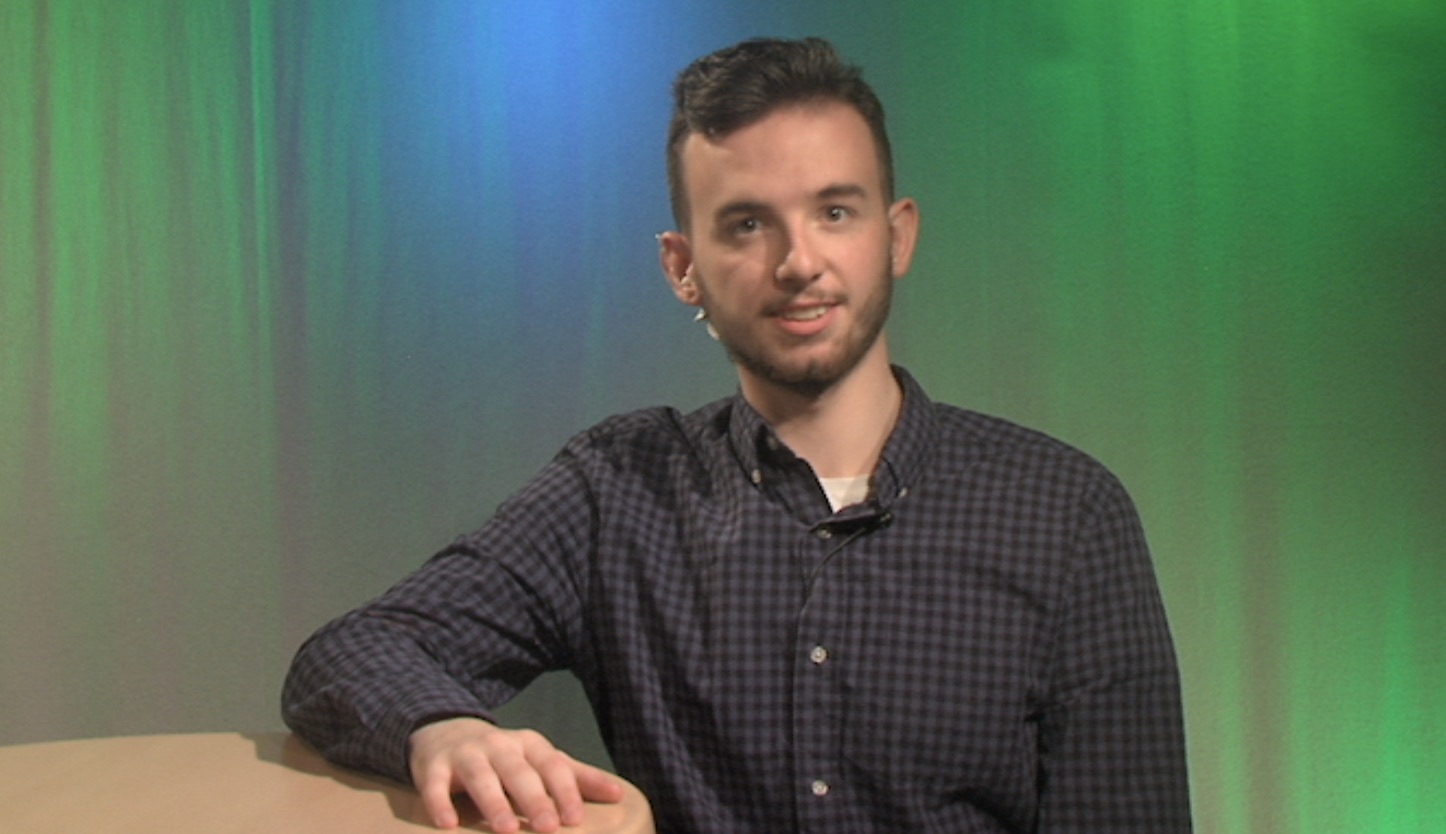Culture
REVIEW: WNO Death in Venice at Mayflower Theatre

The Welsh National Opera (WNO) is back at Mayflower Theatre with their exciting collaborative telling of ‘Death in Venice’. This is so much more than just an opera. Exploring several themes 50 years after its premiere, Benjamin Britten is a British titan in 20th-century opera, and his final operatic piece of work is brilliantly brought to life by WNO. Inspired by the original novella by Thomas Mann, and with a 1971 film of the same name following, this English sung opera explores when imagination collides with reality and the battle between opposing personality traits.
This is my third WNO opera now, and it was completely unlike the other two productions that I had seen (in a very good way of course). With it being sung in English, it automatically made the story that much easier to follow. There were also surtitles above the stage still, for if you couldn’t quite understand how they were enunciating. This opera was actually in collaboration with NoFit State, a circus company casting ‘Tadzio’ and his family with circus performers, acrobats and dancers. Because these particular characters never talk to the protagonist of the story, what better way to accentuate their performances than through another individual art form. It’s almost ‘Cirque du Soleil’ meets opera. Director, Olivia Fuchs, has done a great job orchestrating a smooth collaboration not only between multiple art forms, but also collaboration between the production team and cast.
There were so many layers to this cast and they were all fantastic.
As a quick summary, the story follows renowned author ‘Gustav von Aschenbach’ in his search for beauty and meaning as he travels to Venice. In the middle of a cholera epidemic, not all is lost as he falls in love with a youthful aristocrat who happens to be staying in the same hotel (‘Tadzio’). As ‘Aschenbach’ projects his loneliness and love upon him, he starts to merge his fantasy and imagination with reality before becoming increasingly divorced from his reality.
There were so many layers to this cast and they were all fantastic. The main man ‘Aschenbach’ was played by the brilliant Mark Le Brocq. His passion and the way he told the story, not only through the power in his voice but also in his stage presence and direction was perfect. He basically never left the stage, and the moments after it was just him, his voice, and the music, you could literally hear a pin drop. Bravo! Another shout out also needs to go to Roderick Williams, who plays more characters and wore more hats (almost literally) than I have fingers. Amazingly energetic performance.
Talking on highly energetic performances, ‘Tadzio’ was played by the incredible Antony César. The things that Antony was doing with his body, and the way he wasn’t only doing them but was telling a story through movement was sublime. The mixture of dance, gymnastics and acrobatics was pinpoint perfect, especially the spinning splits and rings routine. Antony’s pieces with Riccardo Saggese were also ridiculously impressive, and the strength and power shown leaves you speechless. Circus director, Firenza Guidi, has directed all of the circus performers (Selma Hellmann, Diana Salles, Vilhelmiina Sinervo) to bounce perfectly off of each other (sometimes literally), but also off of the impressively grand ensemble. The ensemble heightened the overall scale and meaning to certain scenes making it feel more theatrical and cinematic at the same time. Each individual section was so cohesive in coming together from telling their own version of events, to tell the final version of this story. Hugely impressive in multiple different ways.

When it comes to the set, well there actually wasn’t much of one. But there didn’t need to be. There were little bits of set that were brought on, as well as 4 pillars and flight attachments for the acrobats but that was it. This worked really well because the cast became the set. The mix of lights with where the cast were placed, or where/how the acrobats were moving was extremely effective. I particularly liked how they did all of the boat scenes throughout act 1 – very minimal with maximum effect. There was a full length projection screen at the back of the stage showing things to help set the scene like the beach or rain. From where I was sat, it wasn’t too noticeable in all fairness but it was nice to see an added bit of movement when there wasn’t any. Lighting designer, Robbie Butler, has clearly worked very closely with Olivia Fuchs (director) and Nicola Turner (designer) to ensure that the the light movement helped project the story as much as the cast and company on stage were. I remember thinking that the light was indicating direction throughout the piece, whether this was intentional or not it didn’t go unnoticed.
There is little bit of something for everybody in this opera and if you’re new to it – it would be a perfect introduction.
Britten’s brilliantly cinematic score was played out by the WNO orchestra who never fail to add an extra layer to WNO’s operas. Mixed with the impactful singing, the orchestra are the cherry on top of the cake. You actually ended up forgetting that it was live music being played, it just felt like we were watching a movie. The opera is told in two acts, with act 1 almost setting the story up with context and information and act 2 being the rest of the bulk of the story. Personally I thought that act 1 started a little slowly, but this was quickly rectified and before you knew it 80 minutes had already passed and it was the interval. I particularly liked how all of the individual arts had their moment in the spotlight. There were moments where it was purely operatic with ‘Aschenbach’. There were times of musical interludes from the orchestra. There was times when it was just the circus performers from NoFit State, and there were times when it was just the chorus/ensemble doing their bit. When they all came together, the collaboration created a beautiful piece of art.
‘Death in Venice’ wasn’t just an opera. It was theatre, cinema, and the circus all rolled into one thought provoking story. The chorus moments gave off similar vibes to musicals such as ‘Les Miserables‘, the score played by the orchestra was straight out of a Hollywood movie, and the circus – well that speaks for itself. There is little bit of something for everybody in this opera and if you’re new to it – it would be a perfect introduction. The fact that this is also performed in English, makes it that much more accessible. It would be really great to start seeing a younger audience make their way to operas around the country, and WNO are doing all the right things in aim of this – so keep an eye out for when they’re touring to a theatre near you and maybe give it a try yourself.
Culture
Where confidence takes centre stage: How theatre transforms

Performing arts education isn’t just about learning to act, dance, or sing – it’s vital in developing many young people’s confidence and self-expression.
In a digital age where young people are spending more time on their devices than ever before, theatre education provides lifelong skills like communication, resilience and teamwork.
I caught up with some of the students at Artisan Theatre School, a Hampshire based youth theatre club, to see if this rings true.
Ben, 18, said his time at theatre school has “helped develop people skills” and made him “a more confident person”.
He urged other young people to “get involved and enjoy it!”
Daniel, 17, shared a similar sentiment saying his “confidence has grown a lot”.
Theatre education can open a whole world of new opportunities for young people, giving them the space to discover their talents and explore future career paths.
Lucy, 17, has attended Artisan Theatre School for nine years and said: “I want to be a performer in some capacity.”
She added: “That’s my dream because of Artisan.”
Emma, a singing teacher at the school, said performing arts education is “beneficial to anyone,” not just those pursuing it professionally.
She added it can be especially valuable for children with SEN, helping them build confidence, improve communication, and “come out of their shell” in a supportive environment.
Unfortunately, despite its benefits, arts education is not guaranteed for every young person.
Cuts to funding over the last decade has had a significant impact, limiting access to creative learning opportunities.
The Cultural Learning Alliance’s 2025 report reveals a 42% decrease in Creative Arts based GCSE entries since 2010, and a 27% decline in the number of Arts teachers.
Sam Blackwell, principal and founder of Artisan Theatre School, said arts education is “really important” and that “they don’t do enough of it in schools”.
She explained that her vision in creating the school was to “give back more to kids and get them being confident”.
To help fill the gaps left by reduced arts provision in schools, Sam plans to introduce additional classes and offer increased opportunities for her students to learn from industry professionals.
Culture
And we all keep dancing for it can’t get any worse (90s/00s)

The Shakespearean nature of Tony Blair’s time as Prime Minister is something that had never been seen and his obsession with “the spin” that had won him the 1997 election and made him one of the most popular prime ministers when entering office.
With large proportions of the public optimistic for his premiership incoming.
A fall from grace would ensue much like Macbeth.
It would be cruel and untrue to reflect on Tony Blair’s premiership to say that it was a complete failure, especially as many still see him as one of the best PMs the UK has ever had.
Since one of the biggest landslides in UK election history in 1997, he was able to push through many socialist policies without much of a hassle: inflation was low, crime was down by a third, children were achieving some of their highest results ever in school, thousands more students were going to university, a million pensioners and three million children had been taken out of poverty, the quality of the air, beaches, and drinking water was as clean as before the industrial revolution.
However 9/11 changed everything. The era of youthful optimism and rebellion has been replaced by what a lot of thinkers call post-post modernism.
At site Zero, George Bush claimed that “those who are responsible must be brought to justice.”
He outlined Cuba, Iran, Libya, Syria, North Korea and most importantly Iraq.
Once the troops stepped into Iraq, it was the start of a domino effect that quickly decimated Blair’s time as PM.
Unlike Kosovo and Sierra Leone, Britain’s involvement in Iraq did not have the public’s support.
In his book The Prime Ministers, Steve Richards remarks that Tony Blair had not assumed any cabinet position in the lead up to his premiership and asks:”What if Blair had been foreign secretary? at least he would’ve seen, and interpreted intelligence – an explosively contentious issue in the run-up to the Iraq War.”
And then, the day after London had been announced as the host of the 2012 Olympics, on the 6th of July 2005, 7/7 happened.
Four terrorists detonated bombs on public transport – 52 killed and 784 were injured.
When times get tougher and life gets sadder, what do people do? Dance to forget
Prince William and Kate were leaving a Chelsea nightclub at 3am, Prince Harry was partying with Kanye West and getting into a scuffle with photographers at 4am.
The 2000s club scene was here and everyone was taking part; it was loud, it was abrasive, and it was here to stay.
Since the introduction of the stifling 1994 Criminal Justice Act, which is considered to have brought the illegal rave era largely to a close, “free parties” were the new get-around of the law: Student clubs offering “buy one, get three free” on alcopops and 50p doubles for an hour.
Halls bars were £1.20 a pint. Artists like LCD Soundsystem, Missy Elliot and Rihanna began their rise to fame with dirty, booming soundscapes that captured the drug-fuelled atmosphere of clubs as everyone dances to a beat that never seems to end, drenched in sweat.
Films like Trainspotting capture the allure of 2000s clubbing but the grim reality, drugs have found their way into the club scene.
Much like the Oasis album Standing on the Shoulder of Giants is described as Oasis’ “come down album”, the 2000s was a comedown era of clubbing.
The times were sad, but the music got louder?
As David Cameron’s government entered Number 10 Downing Street in 2010 and ushered in 14 years of austerity, where exactly would clubbing culture go with almost all clubs closing….
Culture
REVIEW: Sigrid – There’s Always More That I Could Say

2 out of 5 stars
A disappointing third album filled with negativity
In all honesty, I was late to Sigrid’s party.
I started following the Norwegian pop star in 2023 when she had already released two albums and completed a slew of EPs and international tours.
In no time at all, I was captivated by her rasping tones, funky rhythms, and cool electronic synths.
When news broke that her third album would be releasing on 24 October, it was no surprise to find myself listening and assessing it…
Jellyfish is the first single and the most lighthearted. I like it.
It’s a nice story about two people meeting at a dance and kindling a relationship.
Sigrid sings in a syncopated rhythm, giving a jazzy tone to the tune.
For the first time in her career, she includes a flute.
Cold, gritty, grim
It plays a flourish at the beginning but I can’t hear it throughout the rest of the track. It would be good to hear more of the flute in future.
Fort Knox is single number two. As the name suggests, this is a cold, gritty, grim song about a woman betrayed by her man.
This betrayal cuts so deep that she has retreated into her shell to “lock my love up in… Fort Knox”.
I enjoyed the dramatic, dark nature here, especially the war cry chorus throughout the song.
Towards the end, you would think the song has finished before it plays one more crescendo of strings to cap things off. I thought that was unnecessary.
The third single, Two Years, is written from the perspective of the woman’s boyfriend, another new departure for Sigrid.
He has been chasing for that exact period of time. It’s a cheery song with a strong beat, despite the desperate lyrics like: “What are you running from? / Why did you let me go?”
I’ll Always Be Your Girl is another sad song of frustration and heartache caused by a rowdy, hot-headed partner.
It is sung very well, especially the pleading chorus line, and the drum-guitar combination gives me something to nod along to.
Unconventional energy
Do It Again is the most unremarkable song on the album.
There is a good guitar and drum track, however the story again is quite predictable for Sigrid (being tempted to rekindle on old flame relationship).
Kiss The Sky returns to more unconventional energy which is great.
A lovely fade into the track leads into the main verses.
This time, Sigrid is speaking her verses with a distorted effect rather than singing them. It sounds good and complements her natural raspiness.
A strong guitar riff carries us through the bridge. The electronic synths make this seem like a 1980s dance track.
It’s only the lyrics that make this song a story of disappointment between lovers.
There is sexual innuendo in Hush, Baby, Hurry Slowly.
You could interpret it as a man and woman deciding whether to move forward with their relationship.
You could see it as partners deciding whether to have sex or not.
As a result, it’s an interesting song and makes you listen to try and work it out.
The structure shakes things up by starting with the chorus fading in.
The song ends with the melody slowing down and lowering in pitch, reflecting the title in musical terms.
The title track is the obligatory solo piano song.
Sigrid has had at least one piano focused song in all albums.
This is the most beautiful song in the album, featuring solo piano and a nice resonance on the voice.
The lyrics still contain tensions between people, like “giving…my worst” as a girlfriend.
Nevertheless, this is my favourite song from this year’s collection.
The penultimate track is also the longest in the album.
Have You Heard This Song Before picks up the energy from the previous song with a predictable but welcome mix of drums and synths.
The lyrics are pretty hopeful in tone about wanting to spend time with your partner. This is the most positive track on the album.
The last song, Eternal Sunshine, is a conventional finale song.
It has a regular beat and instrumentation.
It is another song built out of frustration with a partner – she wants to “drink” him out of her mind.
It would have been nice to have something different to end on – maybe a different topic.
This is the shortest album Sigrid has released. That is disappointing.
There are 10 songs in only 31 minutes.
I would have expected the usual 12 tracks or more.
The previous albums managed it fine.
Sucker Punch (2019) and How To Let Go (2022) contained 12 songs. The Special Edition of How To Let Go added 15 songs on top of the originals.
This album differs from the last two in that every song but one is constantly loud, energetic, and pumping.
I would have preferred more balance between softer and pounding songs.
How To Let Go had more positivity in it, such as singing in a taxi, body-confidence in the mirror and making the most of life.
This album has replaced that with disappointment and frustration.
It is the album with the most “explicit” songs – never before have we had an album with so much swearing.
I hope that is toned down in future.
Here’s hoping that the next album is more positive, unconventional and creative.
Perhaps that will come out in three years, like the others.
There’s always more that Sigrid could say (sorry, that was a terrible joke).
-

 Football9 years ago
Football9 years agoFootball – Winchester City vs Didcot Town
-

 Community9 years ago
Community9 years agoWinnall community association renovated
-
Community8 years ago
Hampshire’s frontline services at risk
-

 Hampshire8 years ago
Hampshire8 years agoUniversity of Winchester Parking Trouble
-
Community8 years ago
Knight Bus unveiled at school
-

 Community8 years ago
Community8 years ago‘Controversial’ new plans take shape in Eastleigh
-

 Winchester News Online8 years ago
Winchester News Online8 years ago#MiracleMissy Update
-

 Bulletins7 years ago
Bulletins7 years agoWINOL 20 November 2018
